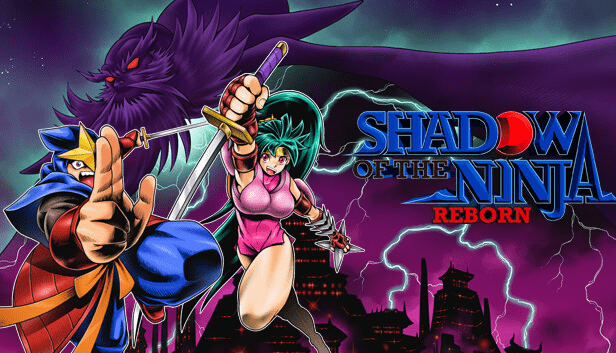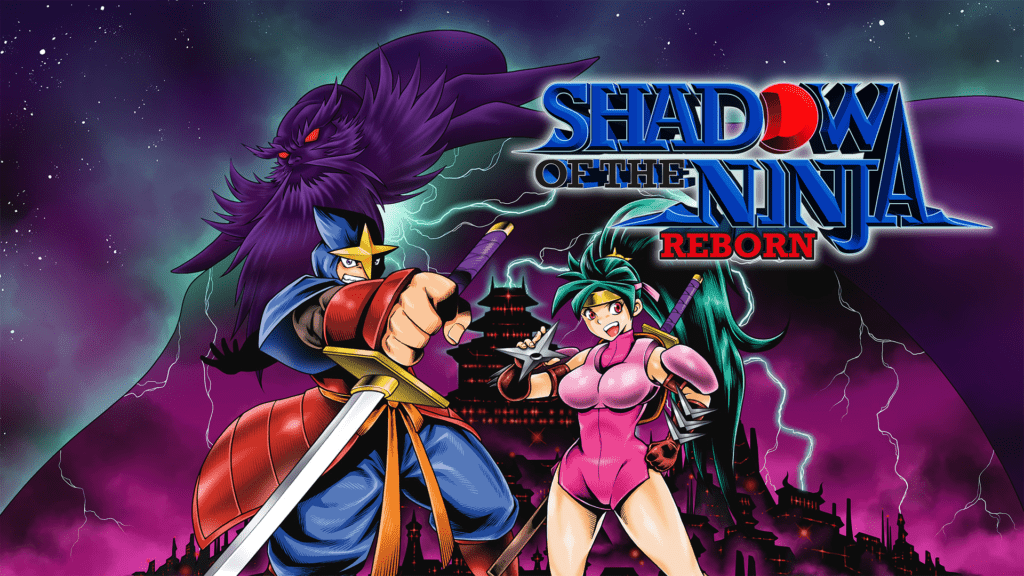
Initial release date: June 7, 2024
Platforms: Nintendo Switch, PlayStation 5, PlayStation 4, Microsoft Windows, Xbox Series X and Series S
Series: Shadow of the Ninja
Genres: Platform game, Role-playing game, Fighting game, Adventure
Developers: NatsumeAtari, Tengo Project
Publishers: NatsumeAtari, Edigger, United Games Entertainment GmbH
Engine: Unity
Ninjas were extremely popular during the 1980s and 1990s. Every child wanted to be a ninja because they looked amazing and possessed a variety of exciting weapons. In some ways, they resembled a cooler version of Batman who was free of moral delusions. There were a plethora of ninjasploitation films from both the East and West, as well as comic books and, naturally, video games. Even today, we get ninja games. Some could argue that ninja mania never ended and continues to this day.
Kids wanted to play ninja games together, and while Teenage Mutant Ninja Turtles II on the NES was a fun beat-em-up, it lacked the cool ninjitsu shown in Ninja Gaiden, a man’s ninja game. When Shadow of the Ninja was published on the NES in 1990, it stood out because it allowed for local two-player co-op. It was fast and cool, and Kaede was an early example of a sexy video game character.
Since 2016, Natsume Atari has been working with the senior men at Tengo Project to rebuild some of its iconic games. Their remakes of Wild Guns, Pocky and Rocky, and The Ninja Saviors were significantly improved with gameplay tweaks and new features. This time, they are focusing on Shadow of the Ninja. Have they hit four home runs in a row? Find out in our Shadow of the Ninja: Reborn review!
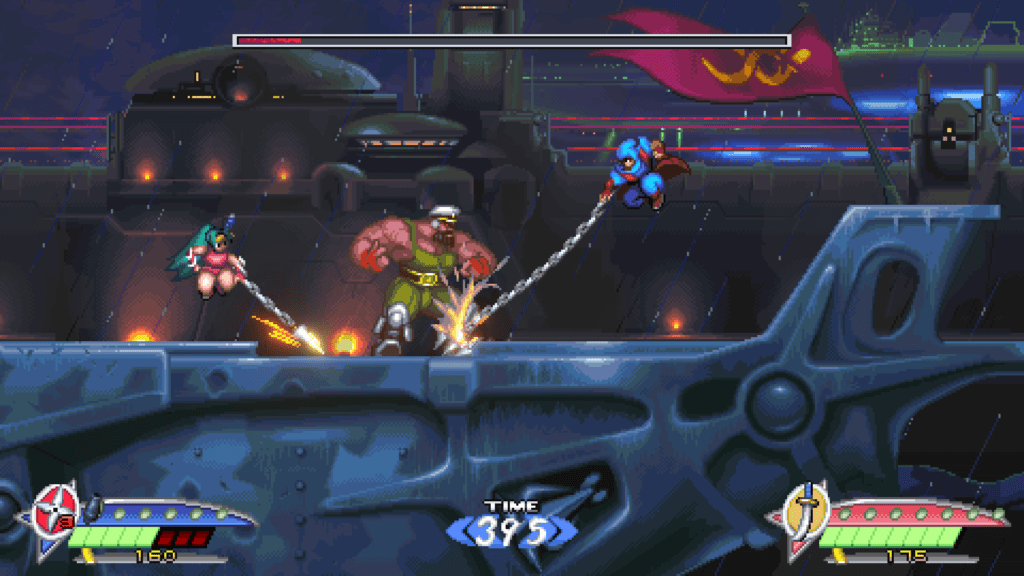
In a dystopian future, an insane Emperor has taken control of the world’s superpowers and established himself as a ruthless dictator. Two ninjas are sent to assassinate the fearless leader, but they must first infiltrate the citadel and confront his three fearsome generals. It’s like Escape From New York meets Ninja Terminator, but with fantastic Metal Slug-style graphics.
Shadow of the Ninja Reborn’s story is an afterthought, as was customary in ninja games in the late 1980s and early 1990s. Kids back then didn’t care, and the remake does not attempt to fix what isn’t broken.
The story is really easy to miss, and the only way to find out what’s going on is to idle at the start screen and let the attract mode begin. It’s a shame this is hidden because the pixel art and animation in this sequence are excellent, and the music is great.
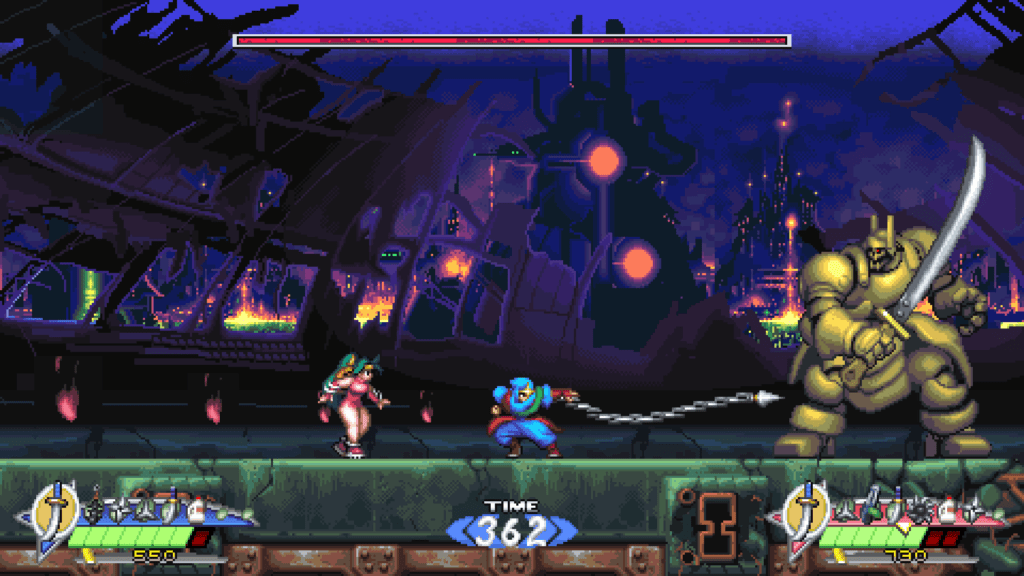
Shadow of the Ninja Reborn, like its predecessor, is an action platformer. There are no rogue-lite components, and you will not level up Hayate or Kaede at all. They are the only playable characters, and their gameplay is identical.
This isn’t a metroidvania at all; it’s a linear maze with complex level design and vicious boss encounters. It is a spicy game in which players must study patterns, memorize stages, and master all ninja tools.
This is a faithful remake in which the developers knew what worked and where to enhance the experience. Because the originals’ gameplay was inspired by arcade action, Shadow of the Ninja has numerous power-ups, a stage timer, death pits, and a distinct sense of urgency while attempting to avoid being killed.
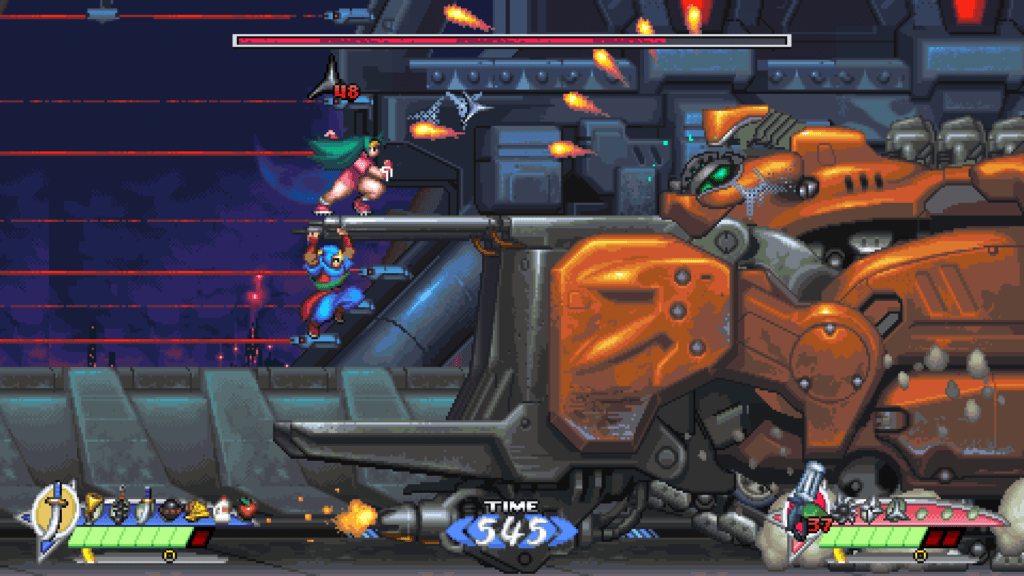
Hayate and Kaede have identical talents. They have their swords, which are always trustworthy, but their chain weapon is powerful and can be whipped in all directions, similar to Simon Belmont in Super Castlevania IV. This chain is tied to a face button, making it constantly ready and helpful. It also produces a very pleasant stabbing sound when it punctures many adversaries.
Both heroes can do a spinning glide technique by jumping and holding the downward direction button. It’s a secret ninja technique that the game won’t reveal unless you look through the instructions in the options. It can be useful for clearing awkward gaps or getting past a barrage of low-level enemy fire. Ninjas are known for their wall jumping and running skills, and the heroes are no exception.
There is a beautiful downward sword pogo attack that causes the heroes to stand on the hilt. The animation is a little too long for it to be useful at first, and it’s best to whip the chain downward while in the air. When charging the sword, the heroes can also unleash a deadly area of effect charge strike, which costs some HP. This is a useful risky move for strong players who are proficient at the rapid step dodge technique.
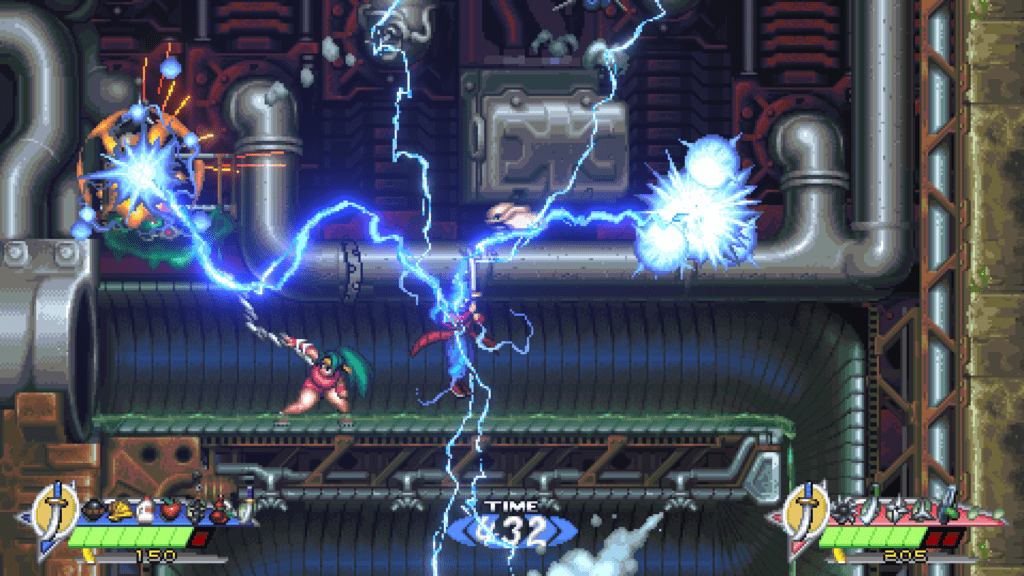
The majority of these mechanics are new and contribute to a more demanding and in-depth action game. On top of Hayate and Kaede’s fundamental abilities, there are numerous ninja equipment to obtain.
There are approximately 50 of them, and some of them are replicated with different graphics and stats; the game justifies this by giving each one a value when purchased in the ninja store. You could go into war with the gattling cannon, but it would be pricey.
Clearing an end-stage boss without using any of your ninja weapons is how you unlock it in the ninja store. This is an excellent technique to challenge players, and healing items are some of the most difficult unlockables to obtain because when Hayate or Kaede die, they lose everything. Fortunately, Shadow of the Ninja is merciful enough to provide players with a healing item if they die too often, so they are not discouraged too much.
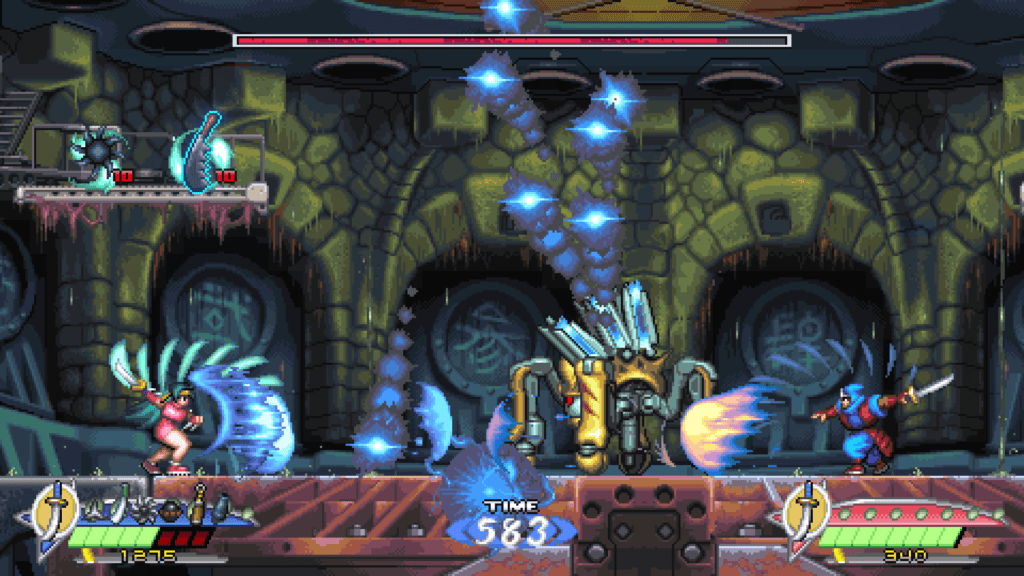
Whatever happens, you’ll always have money to spend. Shadow of the Ninja is a difficult game, and this is how it allows less skilled players to have a fighting chance at victory. Expect to struggle to see the finish of the first stage. Dedicated players will progress, and it won’t be long before everything clicks.
Mastering the pogo sword and switching weapons on the fly makes Shadow of the Ninja appear to be a technical action game in the hands of an experienced player. Daring dodges and sly shotgun blasts while bouncing off adversaries and avoiding charging generals or lumbering zombie samurai have never felt or looked better.
The pixel art and animation have undergone significant changes. Shadow of the Ninja is reminiscent of a slick SNK arcade game, with massive sprites with numerous moving elements, depth, volume, and unrivaled attention to detail. Natsume Atari’s remakes have always gone above and beyond with their visuals, and Shadow of the Ninja is no exception.
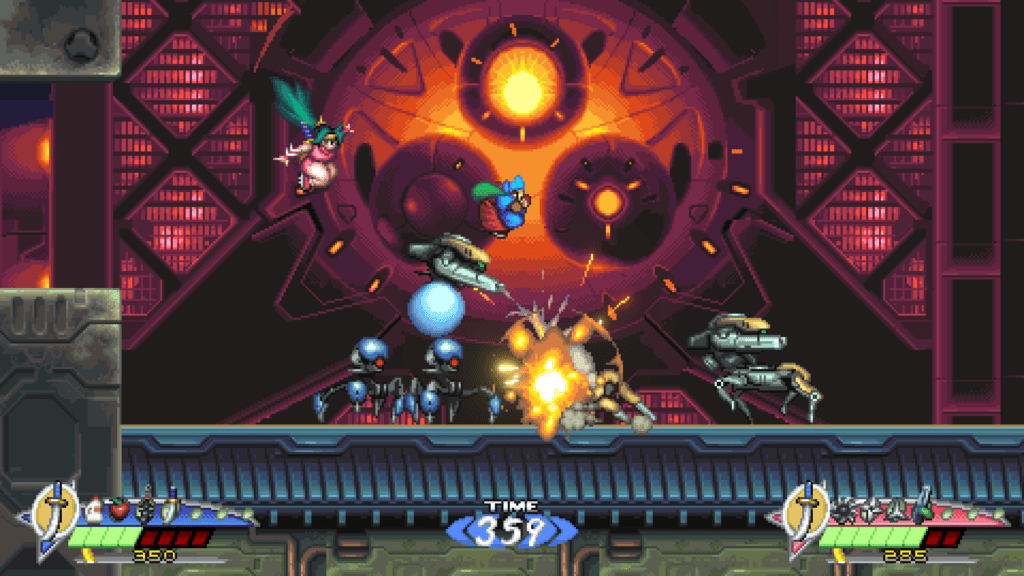
The environment is so textured and rich. Small water drops pouring from the roof, combined with vapor clouding the room in several stages, contribute significantly to the dank mood. Highlights glisten, and enormous metallic buildings show cracked paint and rust. The enormous number of opponents keeps the game from seeming repetitive, and numerous ambient features are rarely repeated.
In comparison to this remake, the original game appears and feels far more rudimentary and antiquated. Everything seems and feels larger and sweatier, particularly Kaede’s thighs, which have a beautiful hefty, plumpy heaviness to them.
The music is fantastic, with a fast and dynamic tempo and a chiptune feel. It sounds like something out of a Mega Man X game, with shredding and wailing guitars and infectious tunes that linger long after you’ve finished playing. This is the kind of music that gets your blood pumping and motivates you to keep going without looking back.
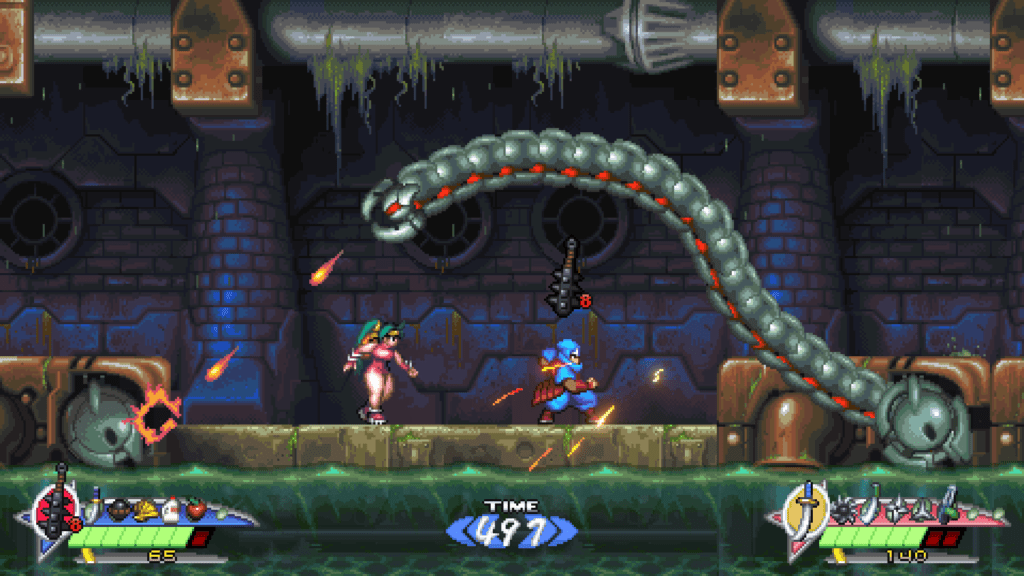
Shadow of the Ninja Reborn is a genuine 90s kid game, and its local co-op gameplay reflects this spirit. While this can make the experience slightly simpler for the less skilled player, it can also put more stress on the better player, who may feel pressured to carry their partner.
Shadow of the Ninja Reborn is another success for Tengo Project and Natsume Atari. Given the game’s scale, more material, and gameplay advancements, this appears to be their best work yet. This is the best 2D action ninja game out there, and it is not for the faint of heart.
Review Overview
Gameplay – 90%
Controls – 85%
Aesthetics – 88%
Content – 82%
Accessibility – 80%
Value – 85%
Overall Rating – 87%
VERY GOOD!
Summary: Shadow of the Ninja Reborn excels in delivering an outstanding ninja action experience with polished gameplay, striking aesthetics, and engaging content. The game strikes a fine balance between challenging gameplay and accessibility, making it a must-play for both fans of the genre and newcomers alike. While it could benefit from more post-game content, its quality and depth make it a standout title that honors the legacy of ninja-themed games.

